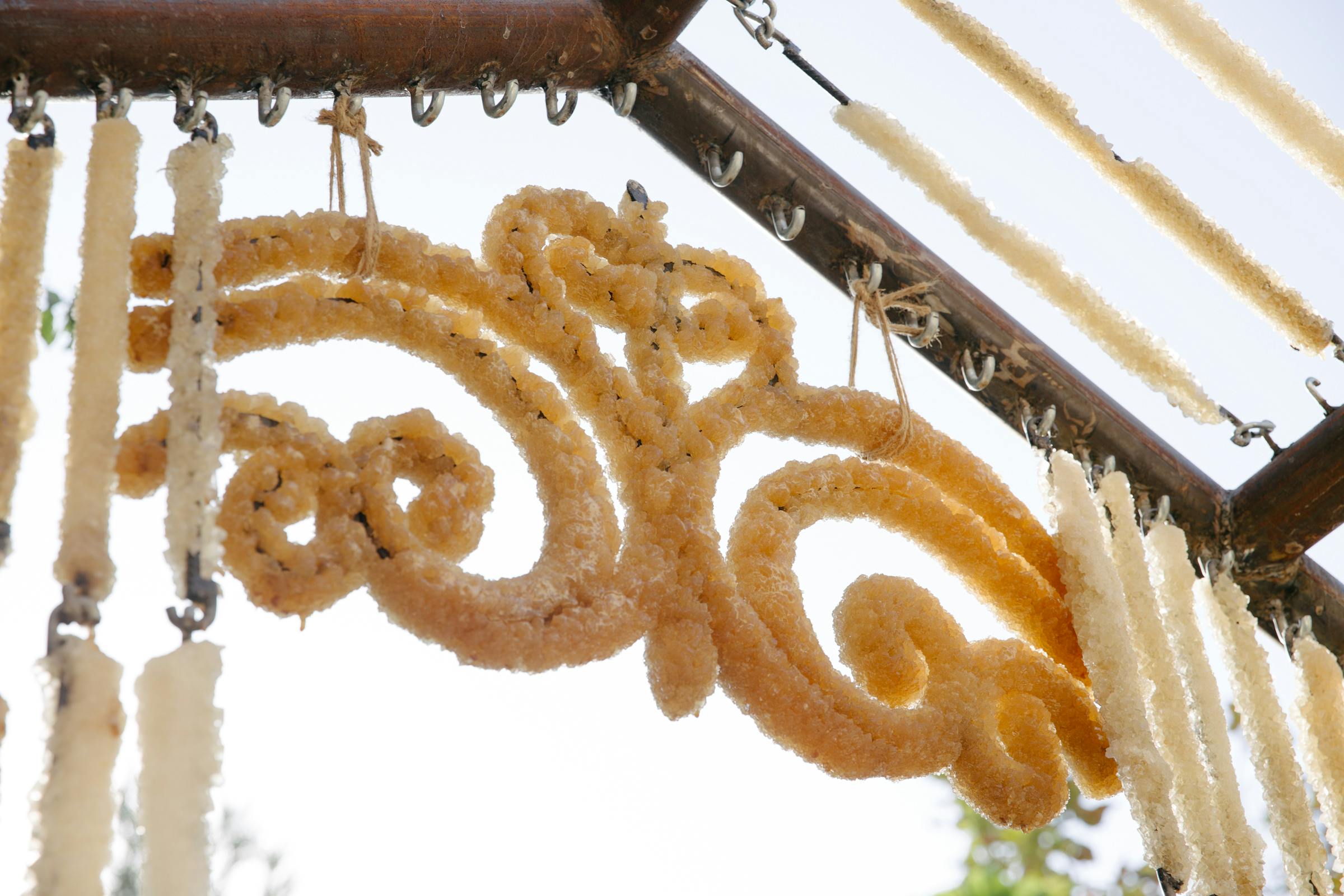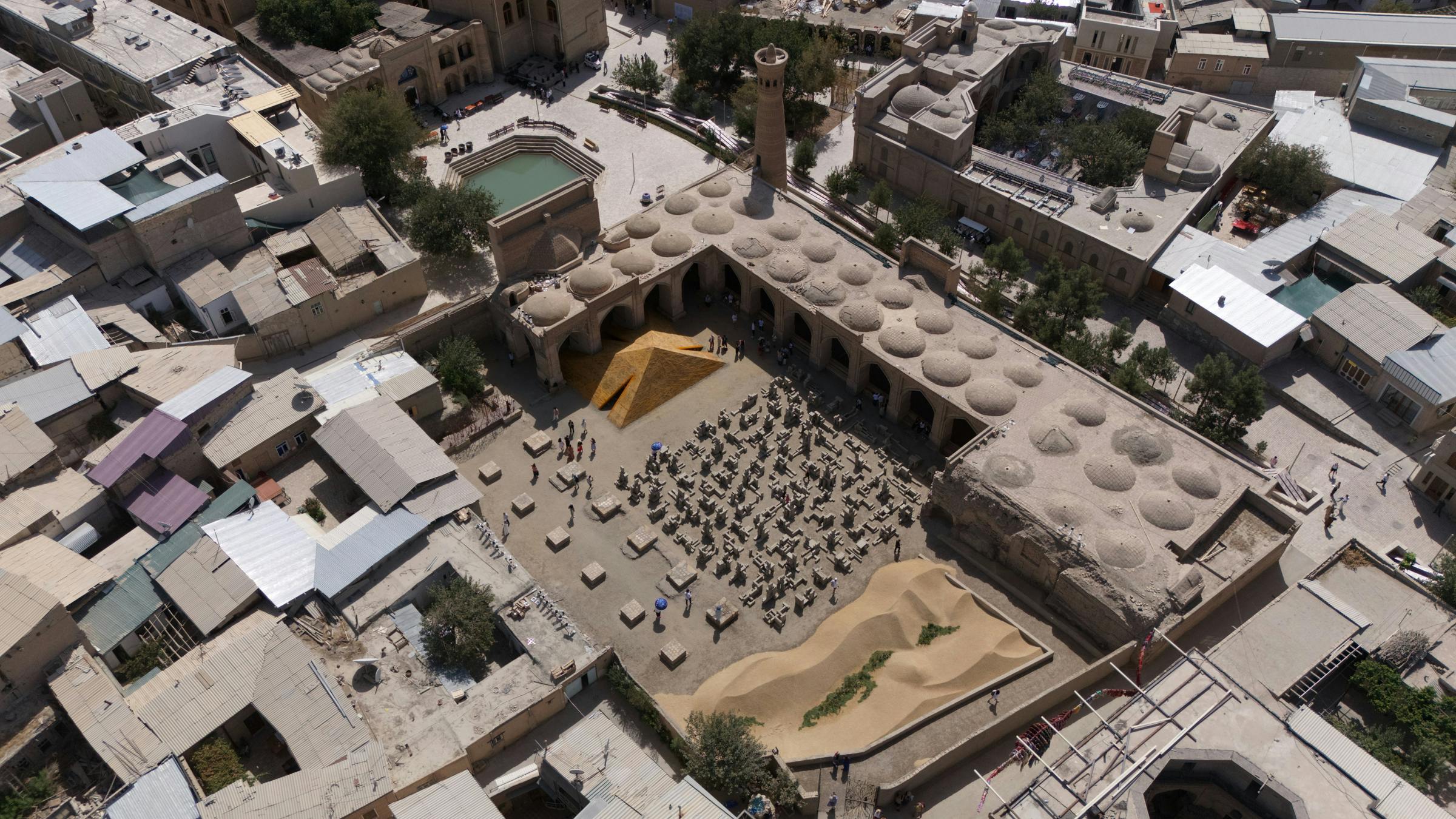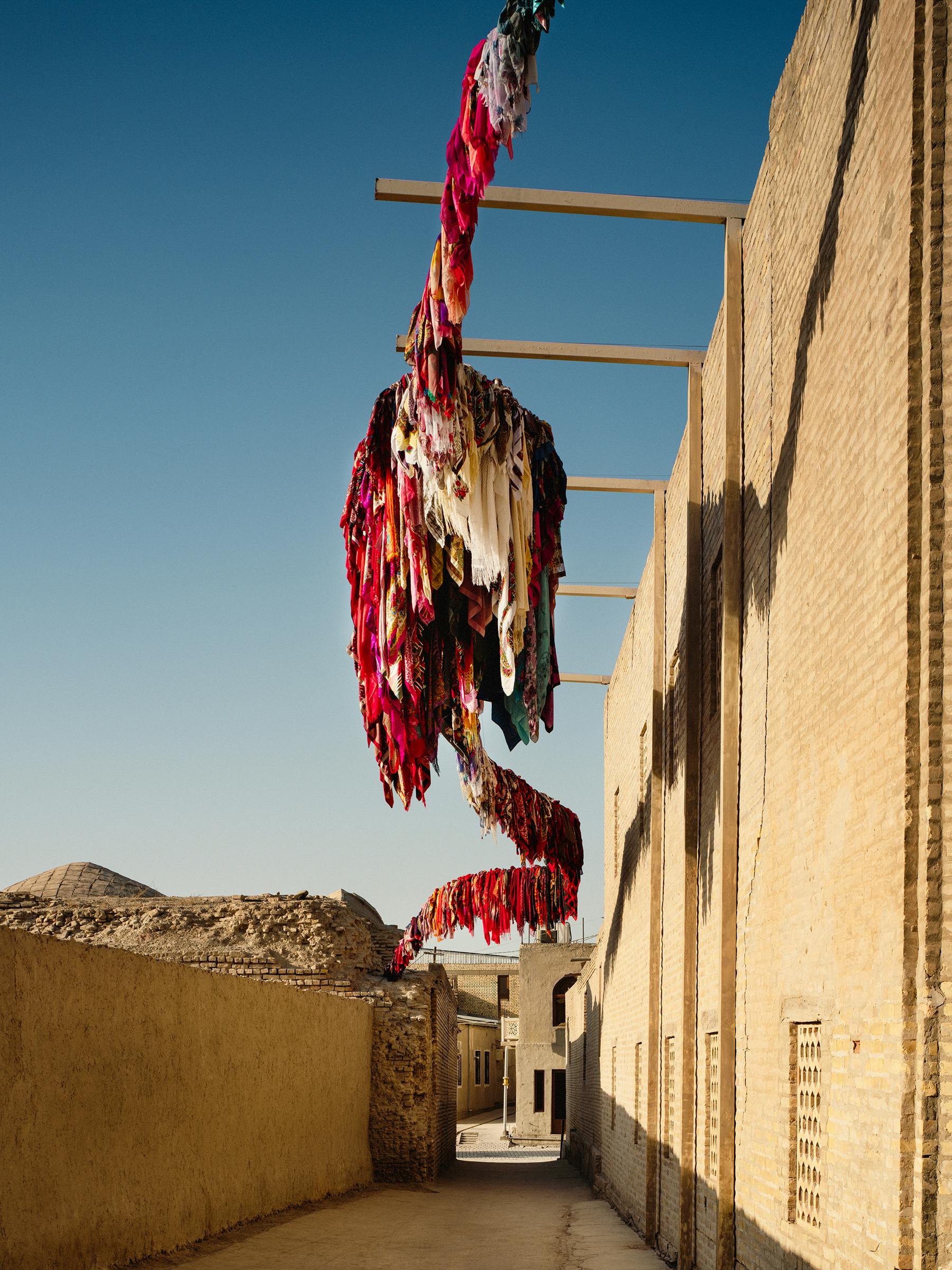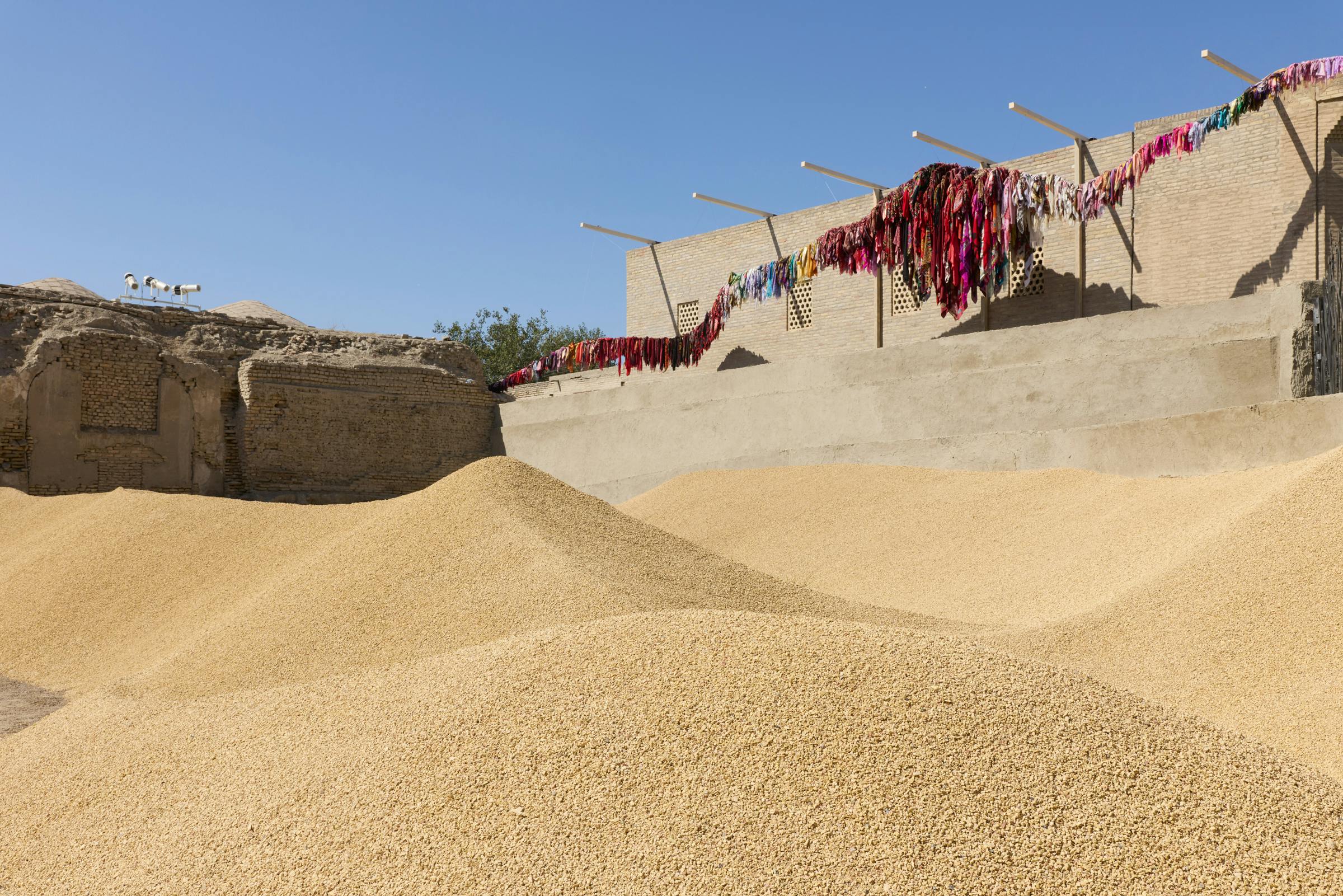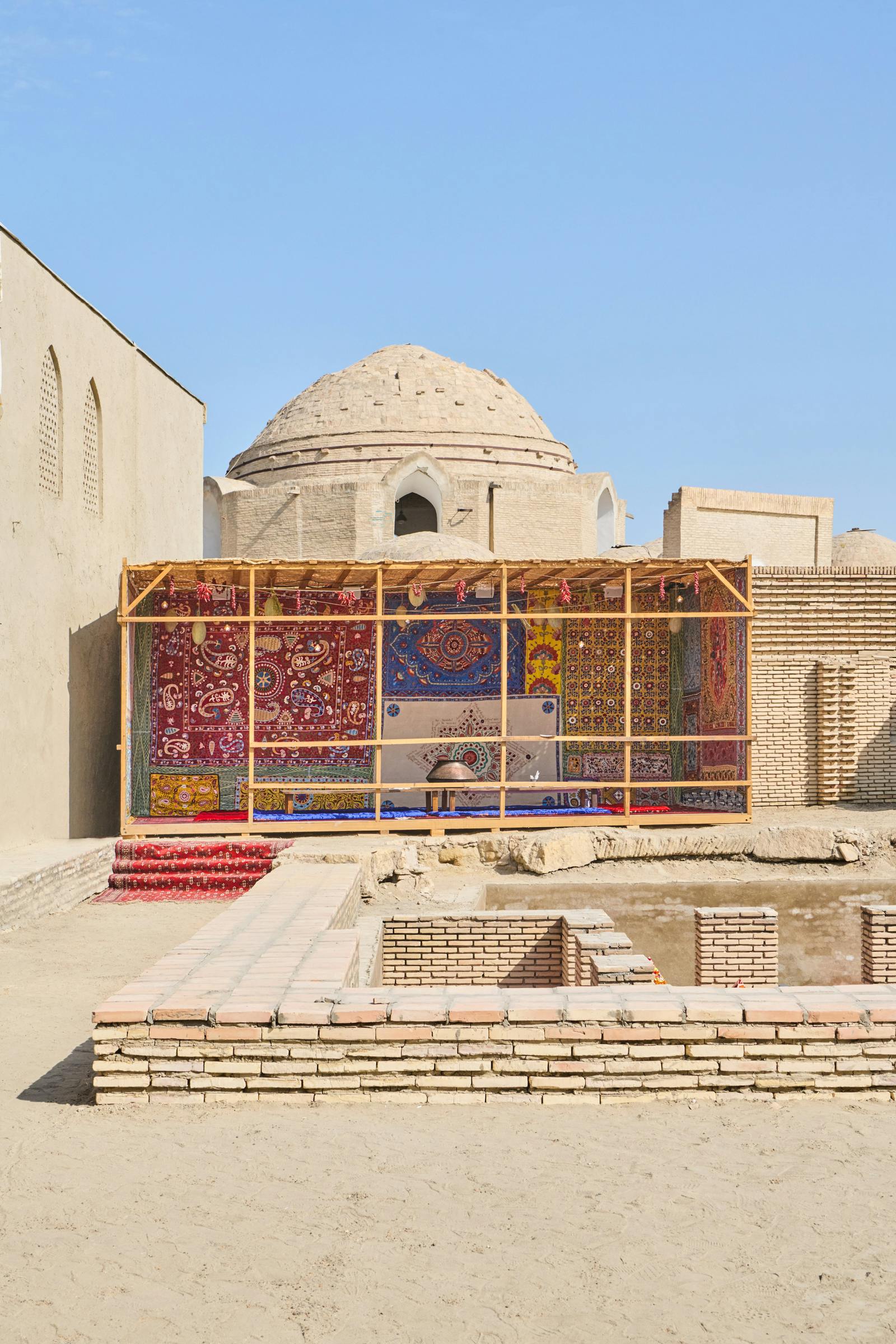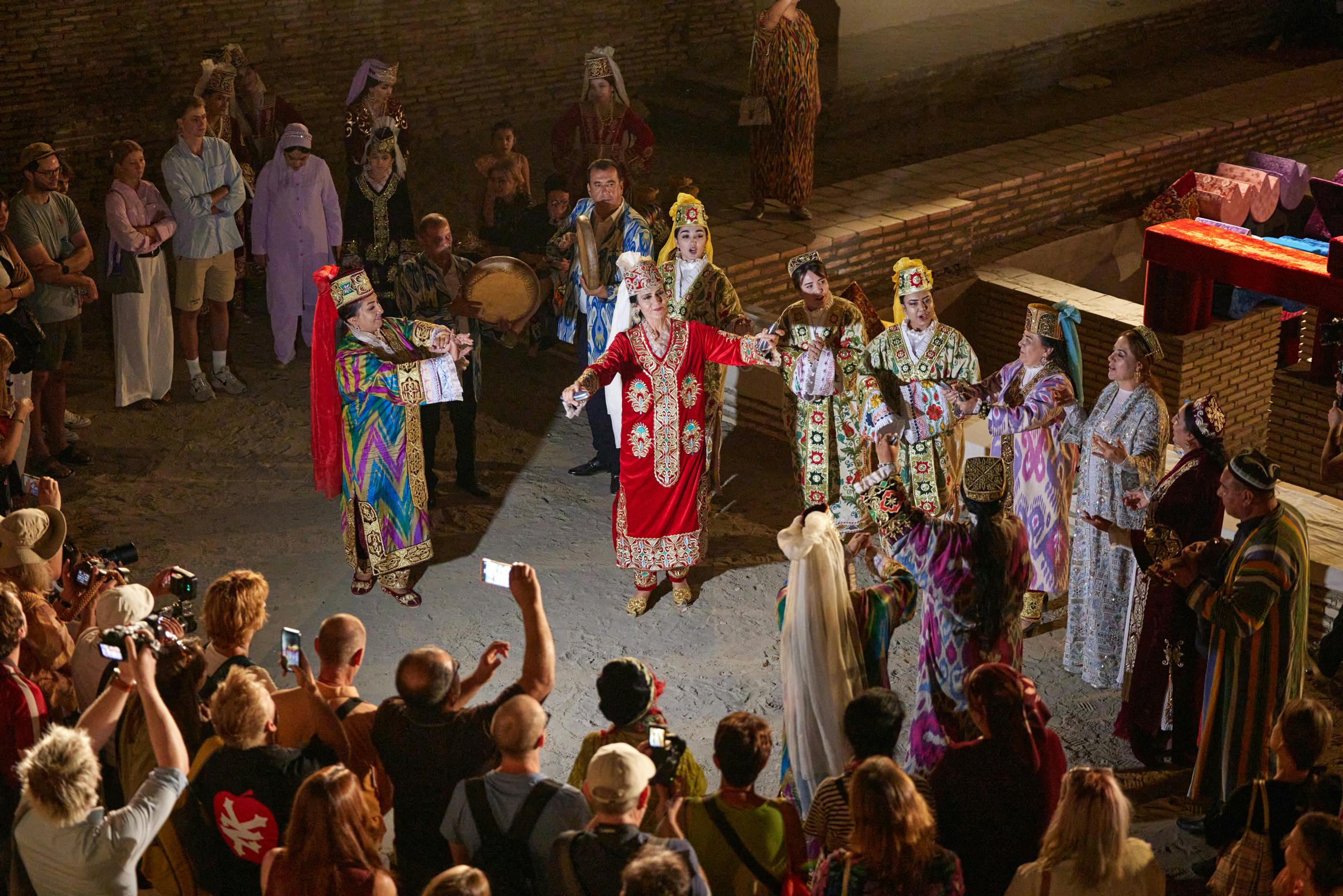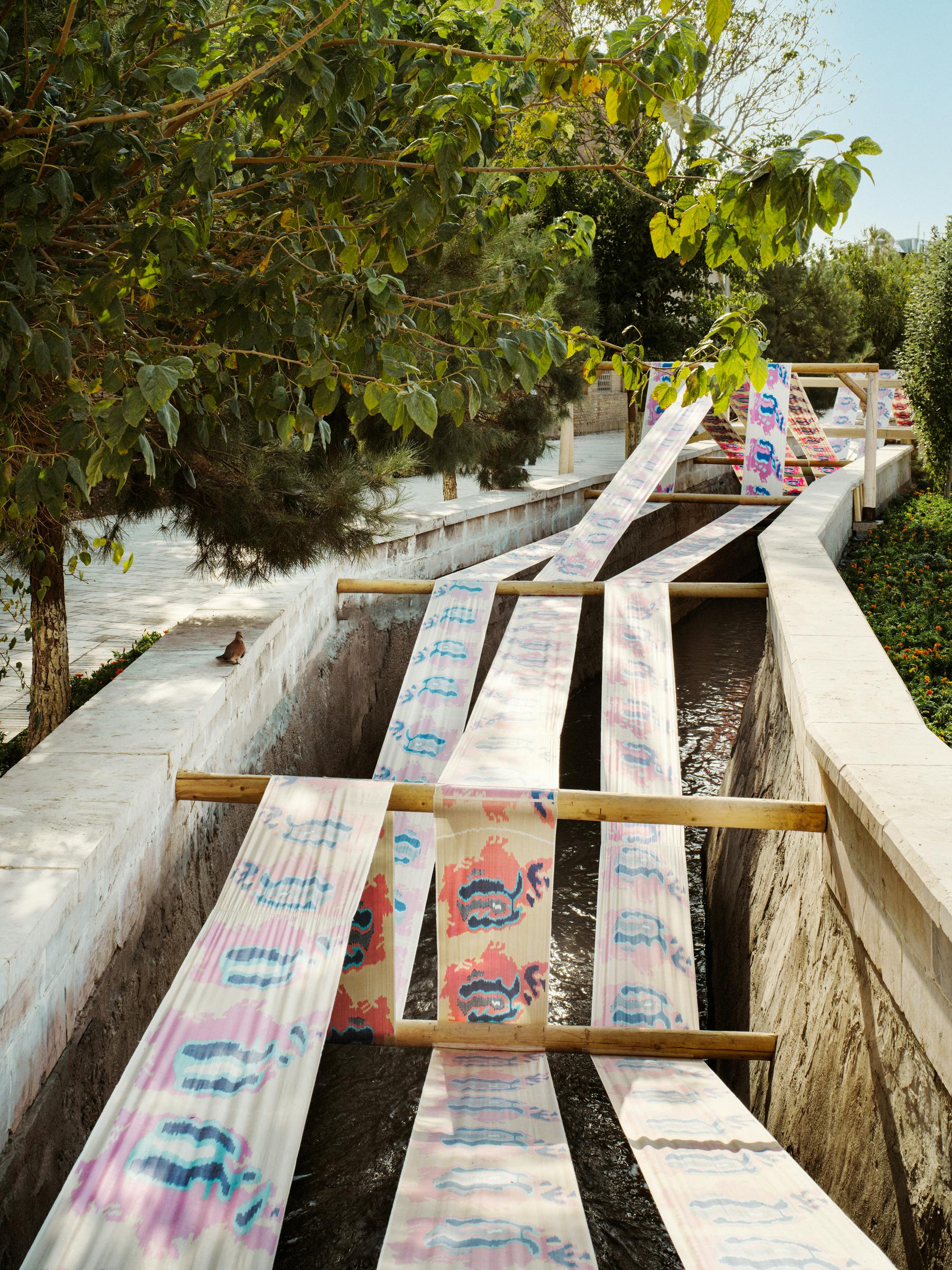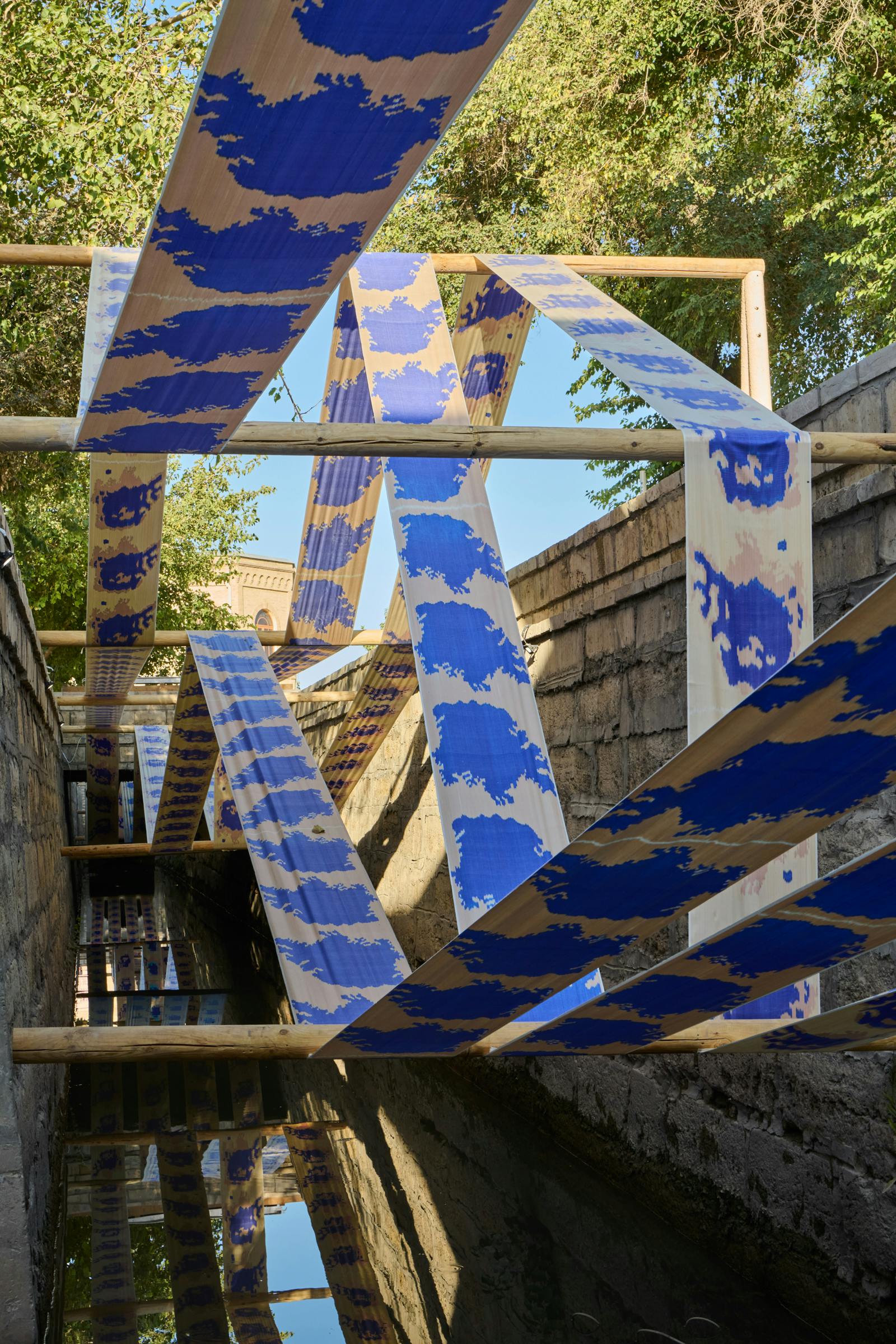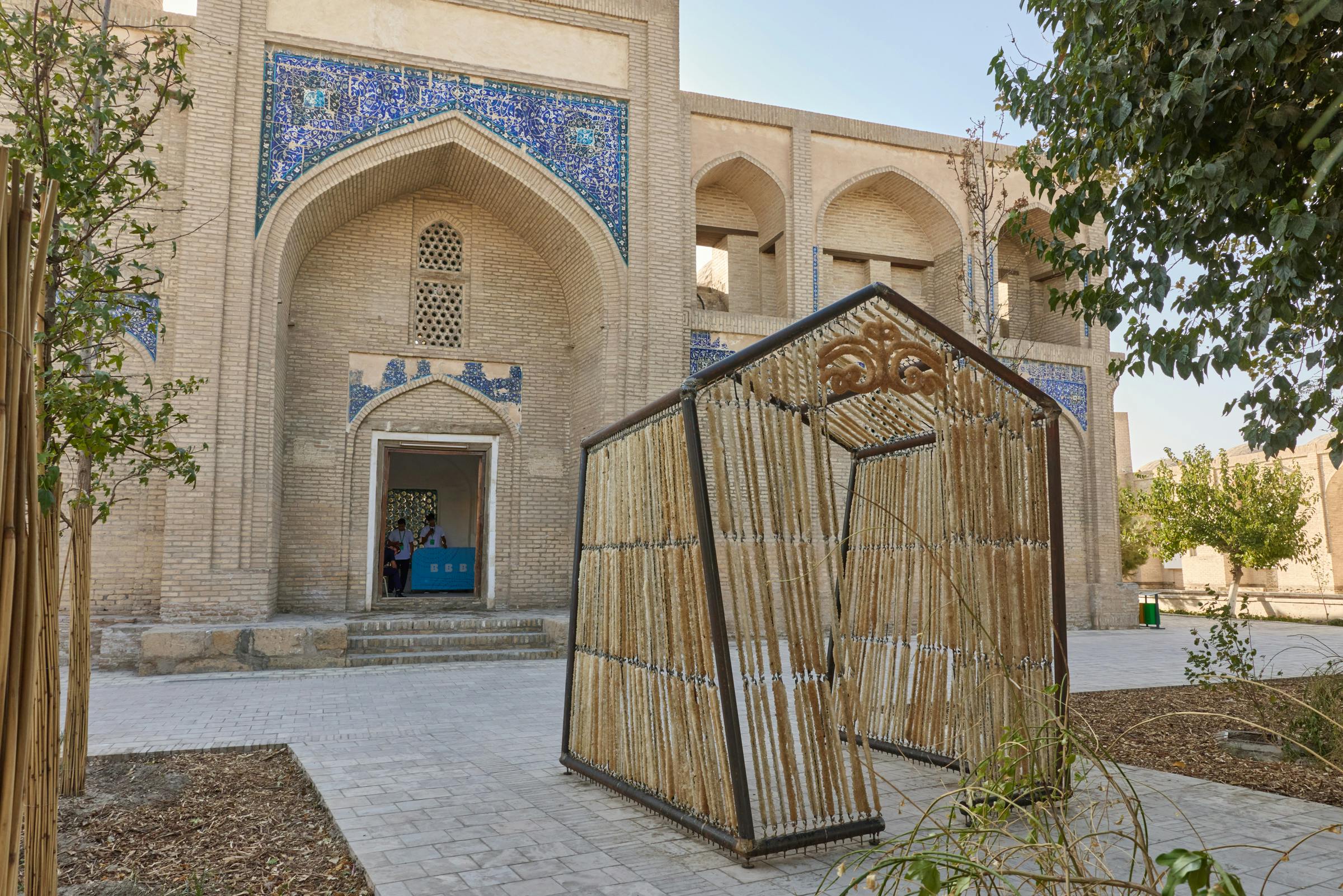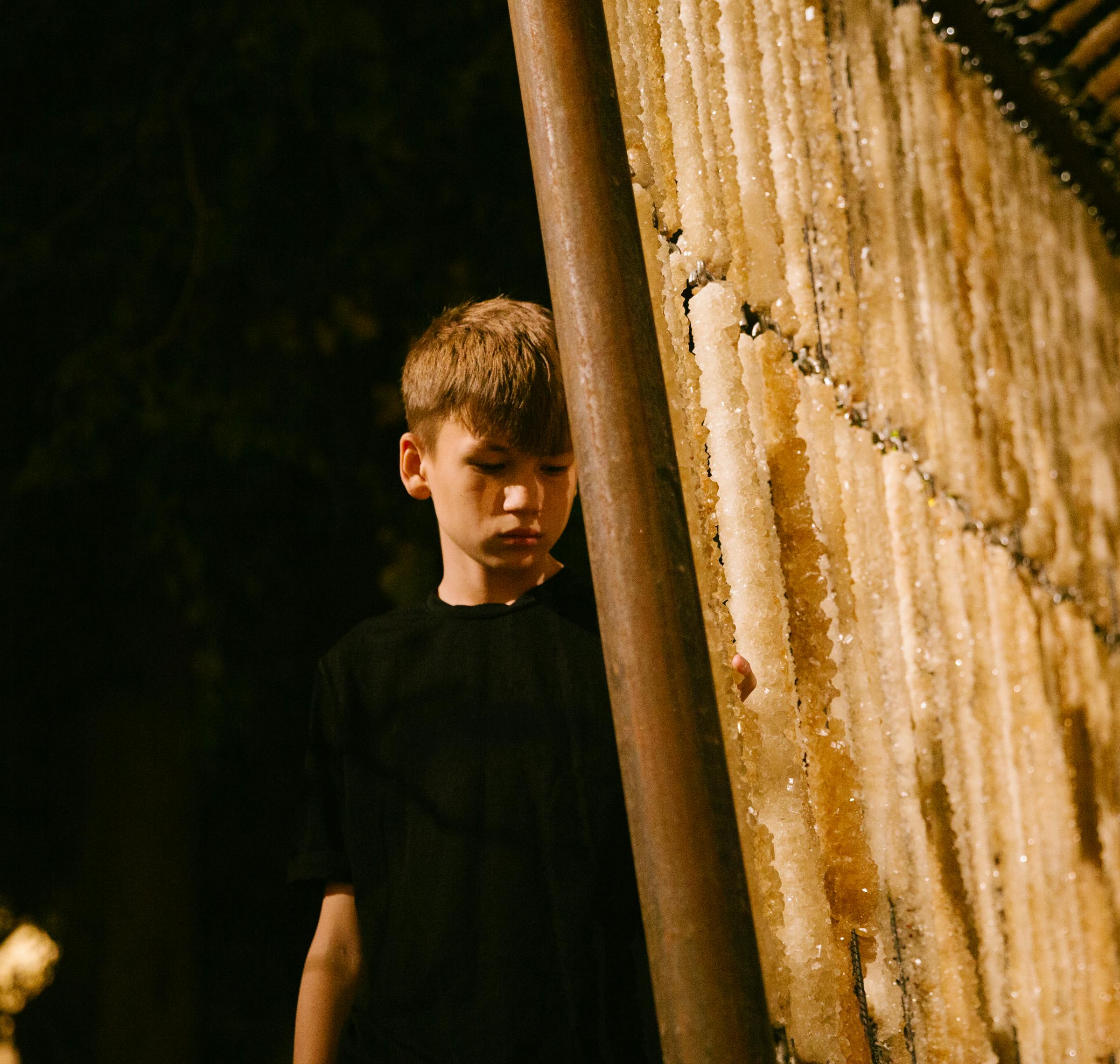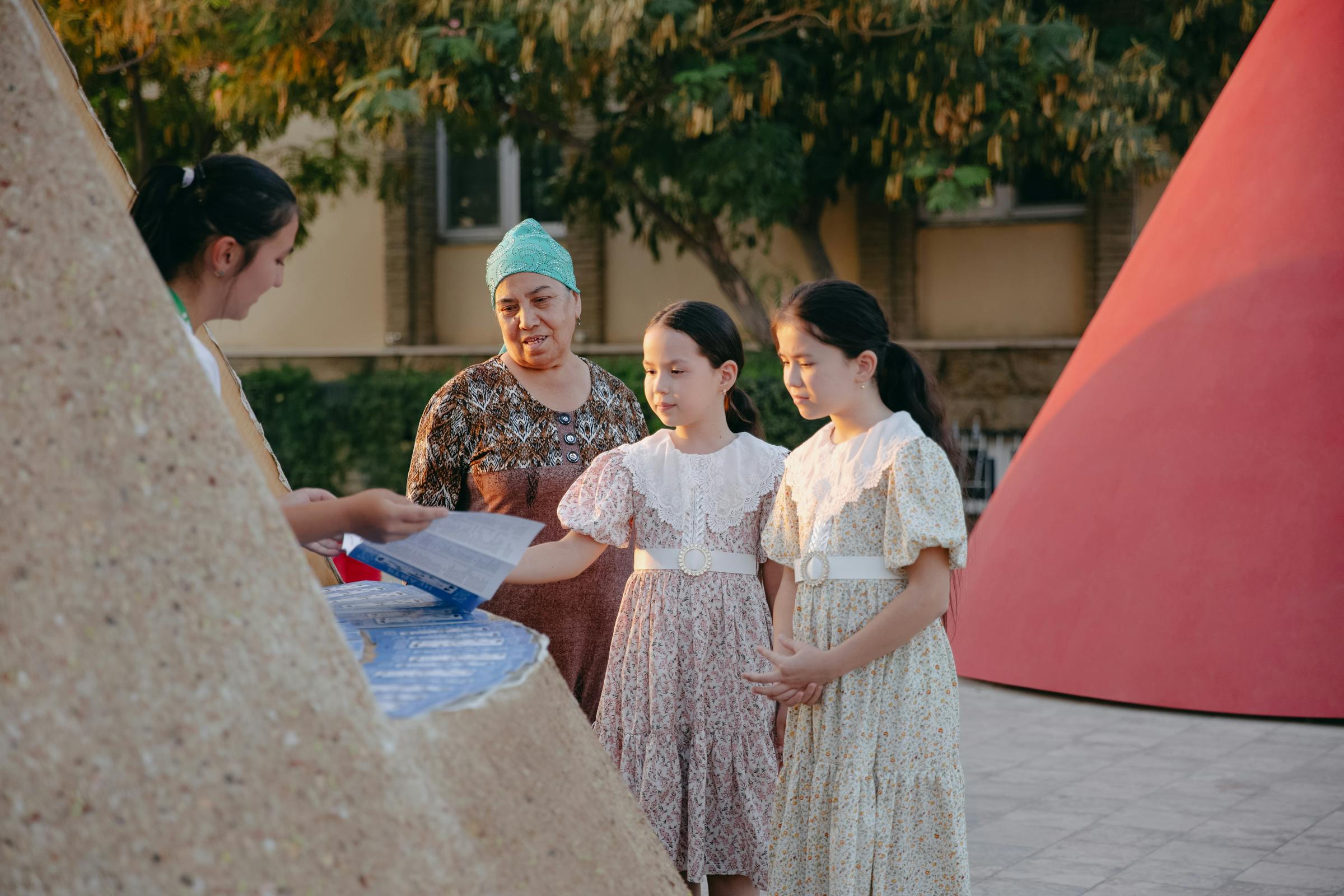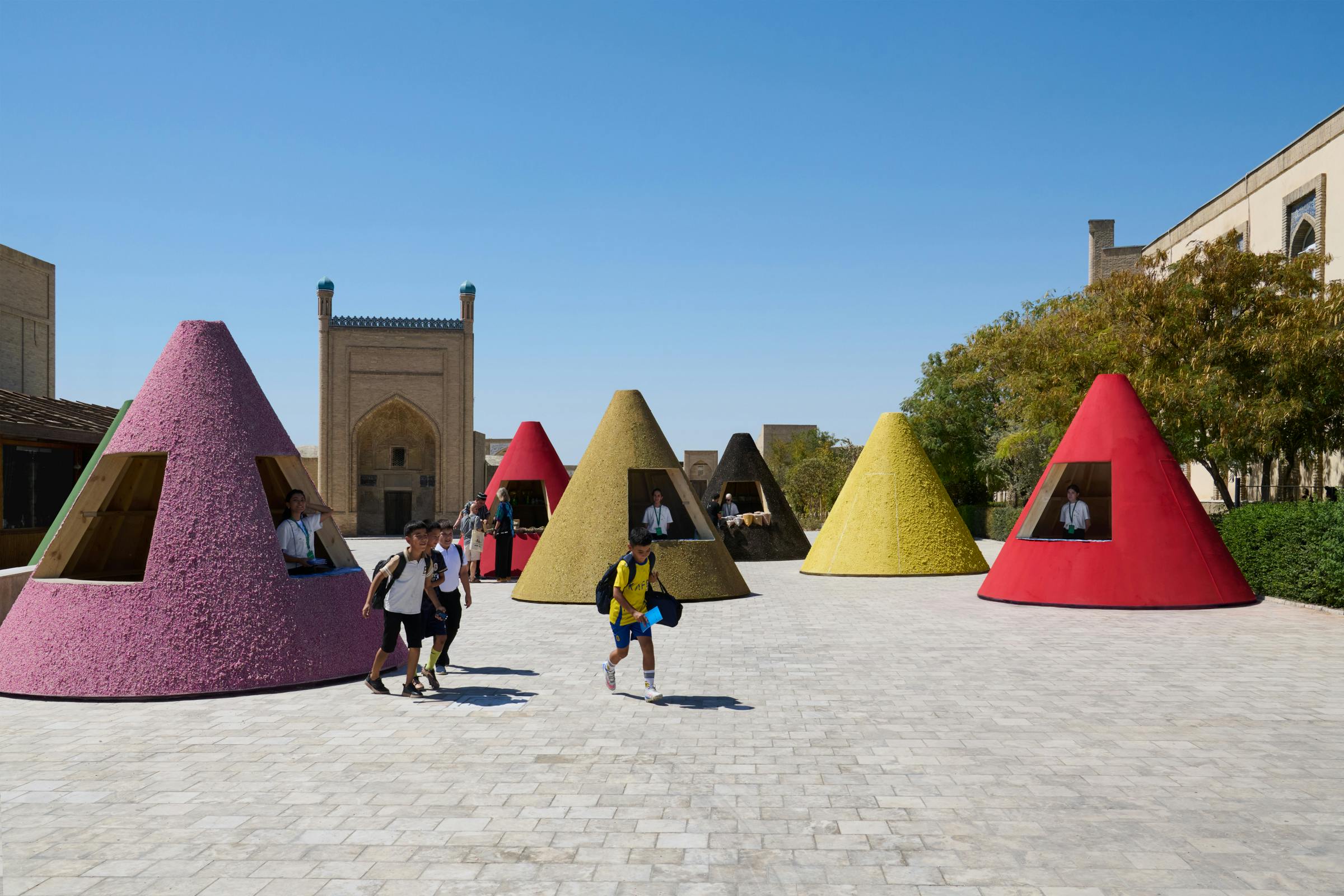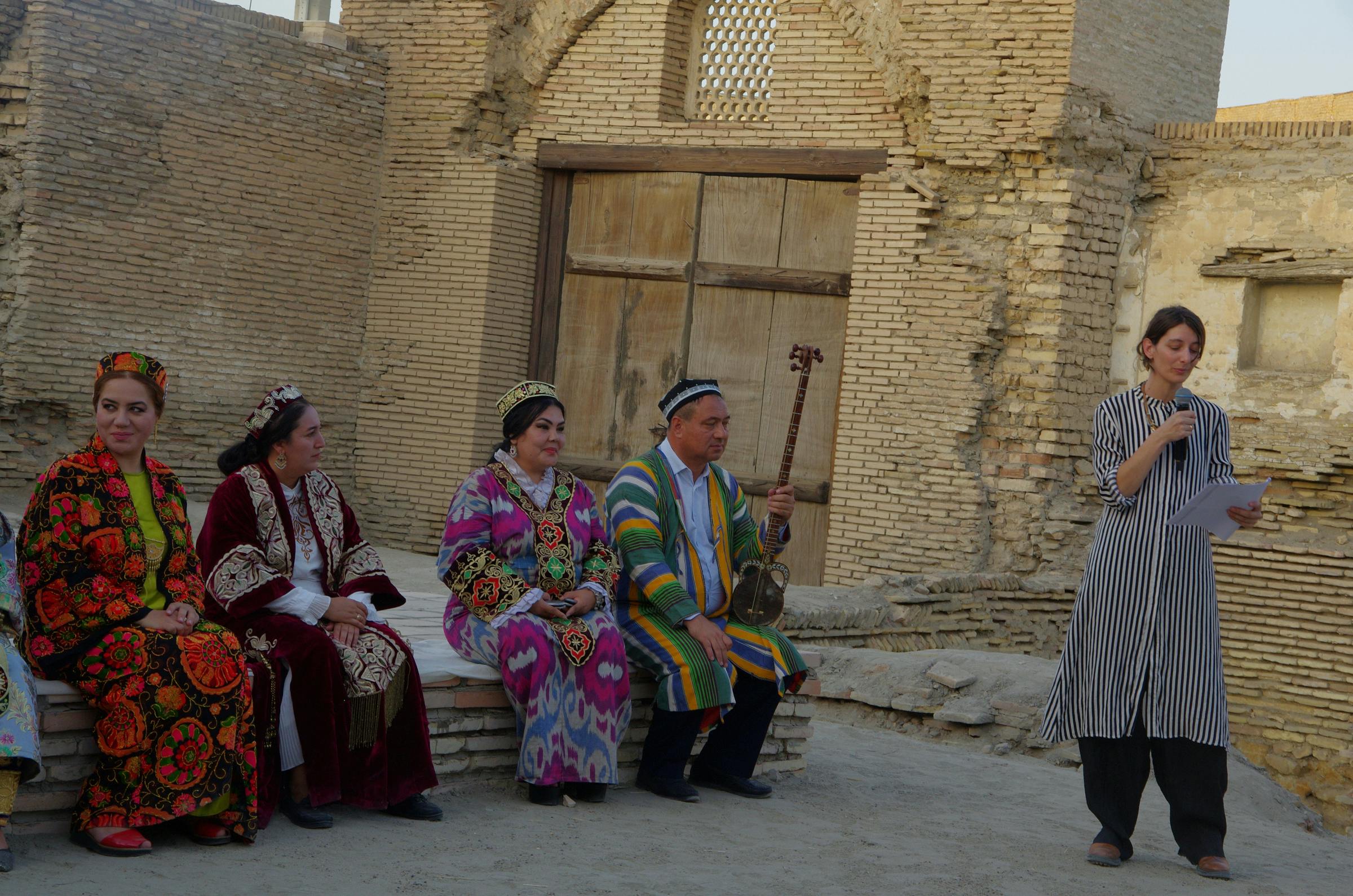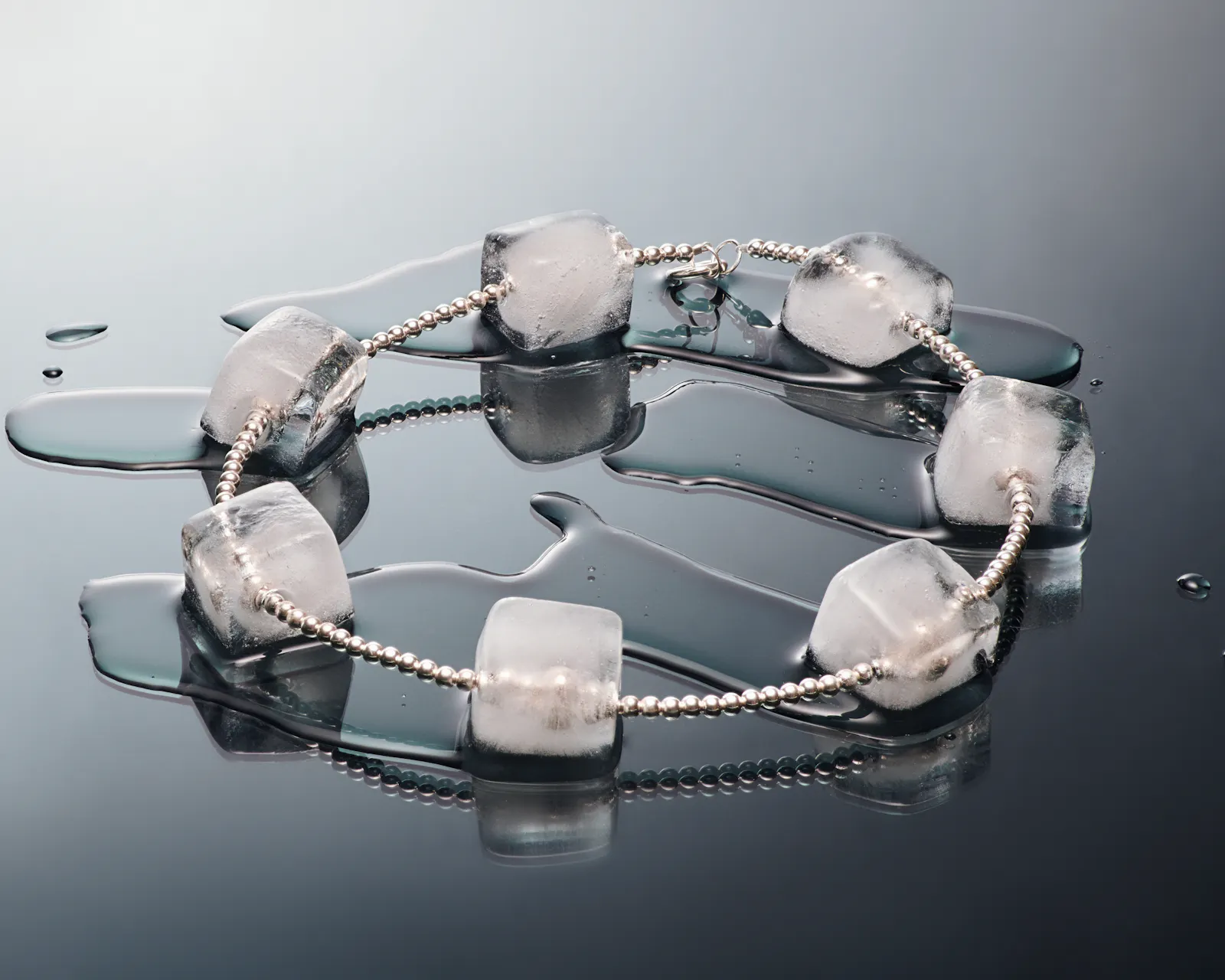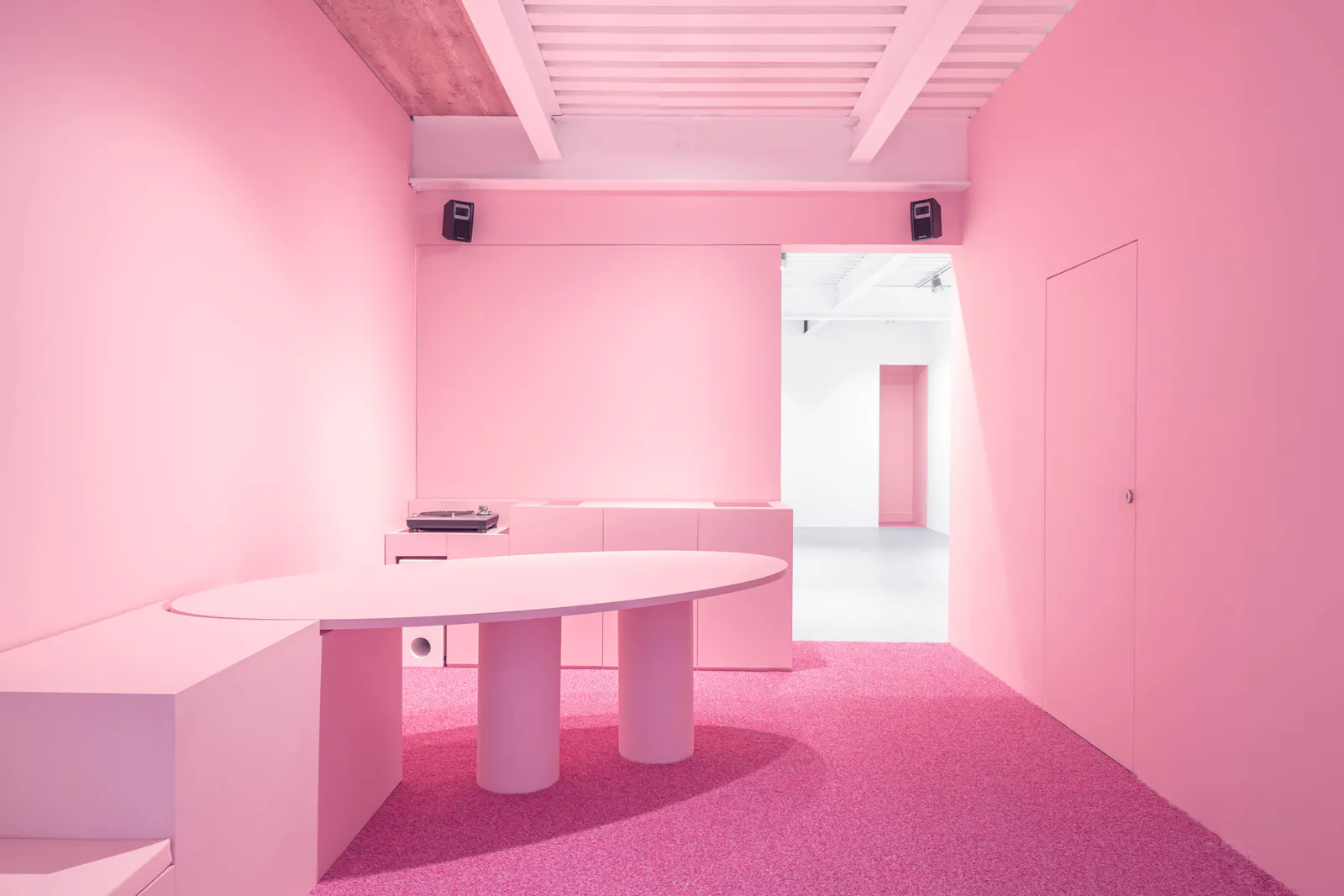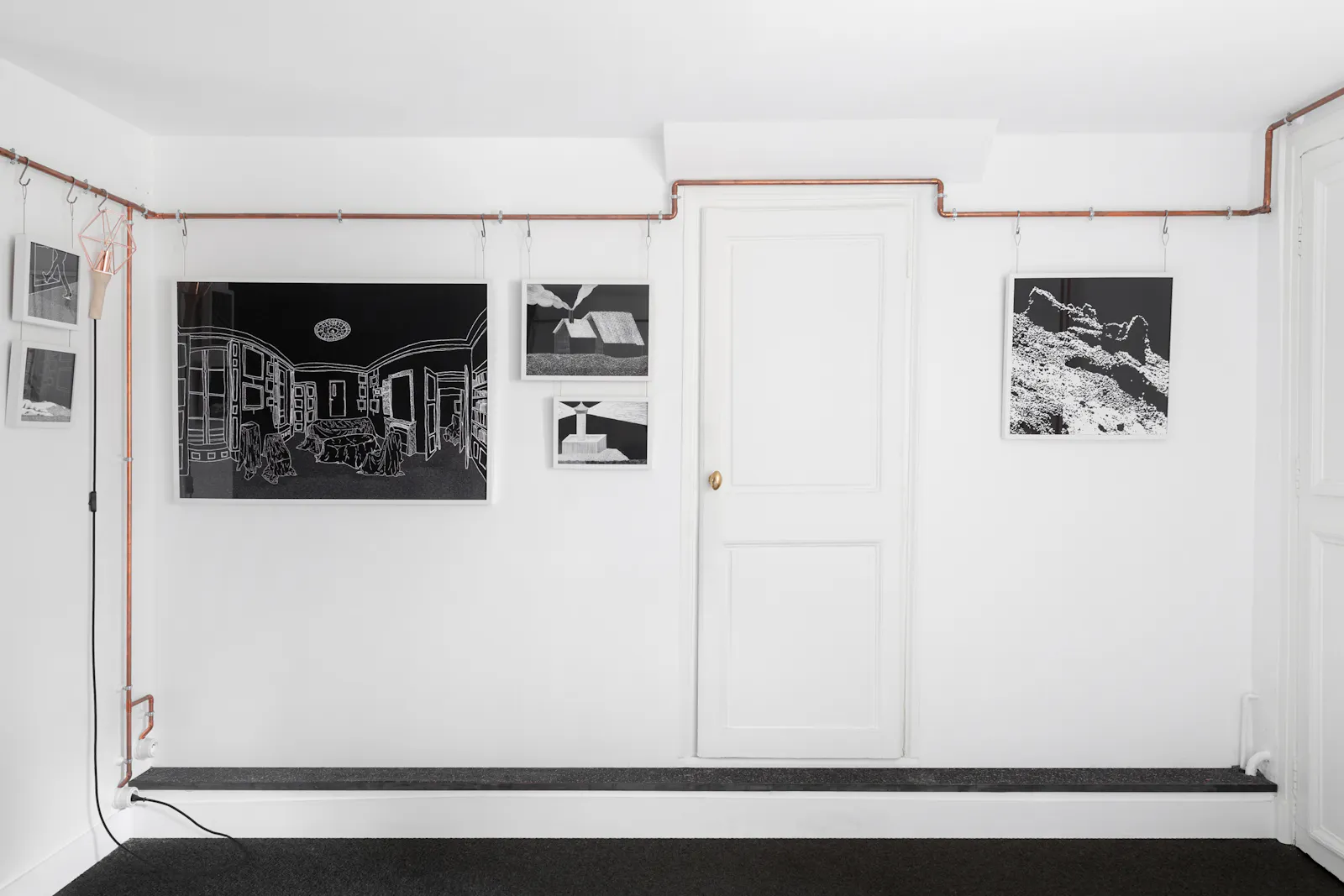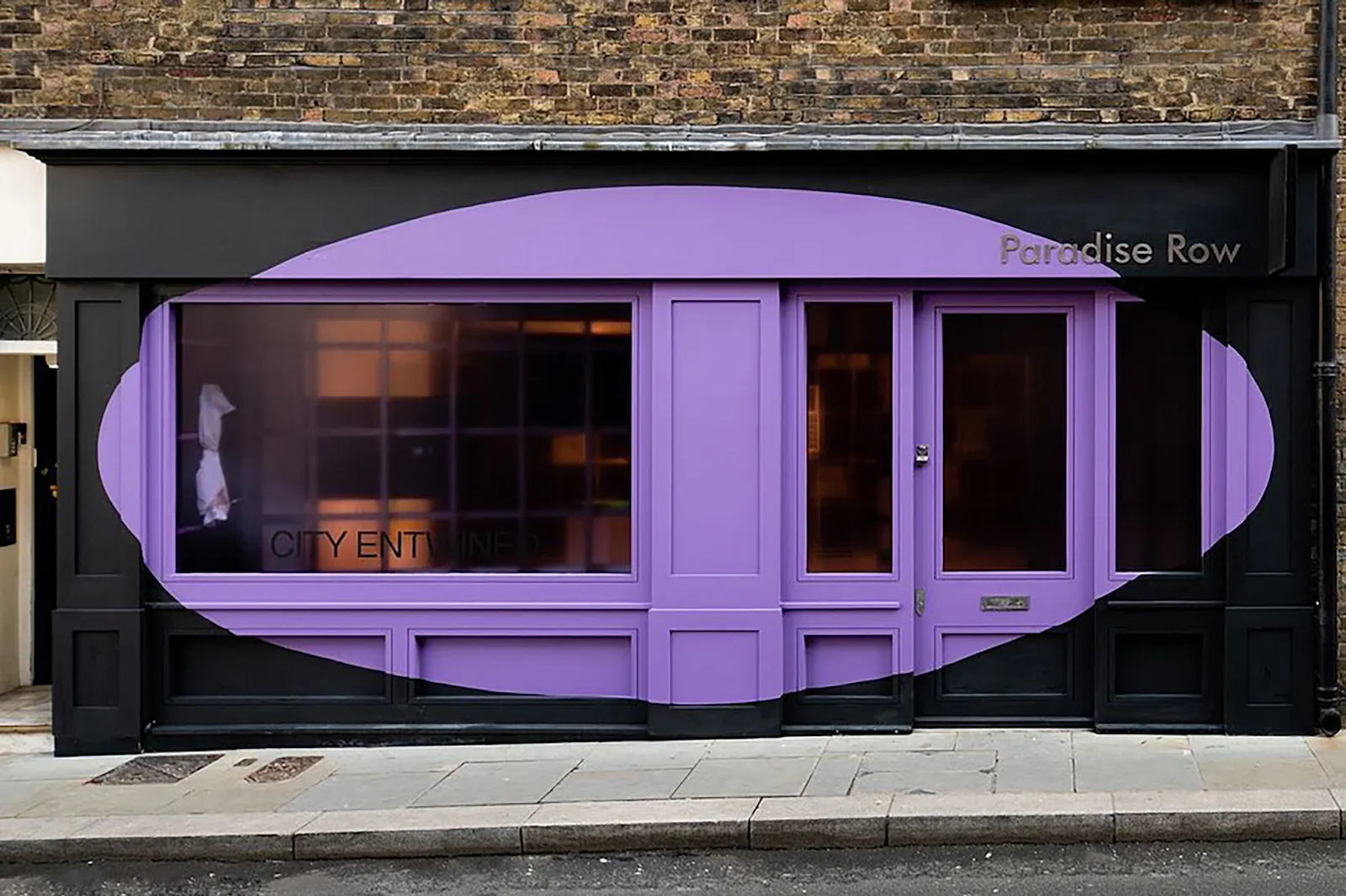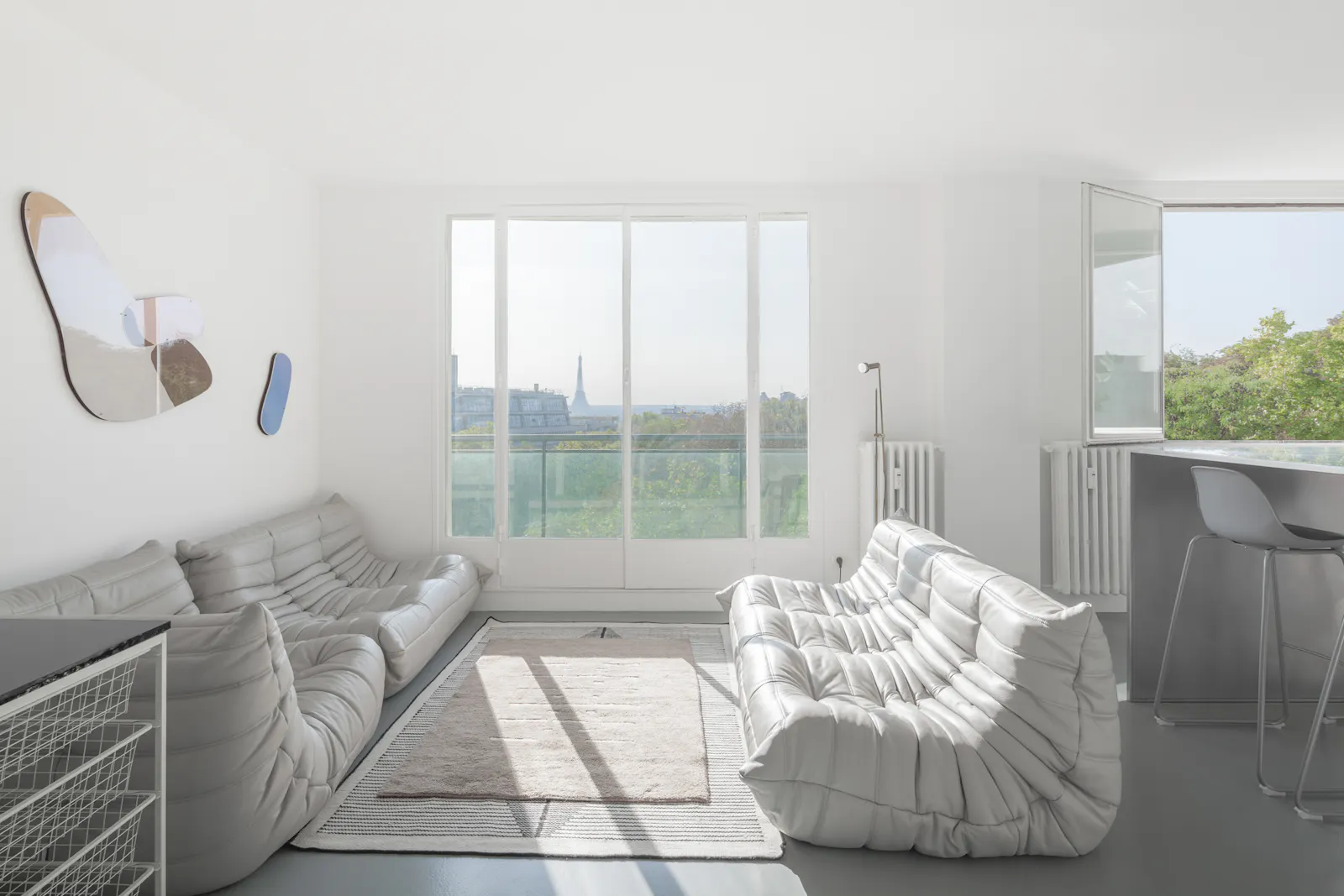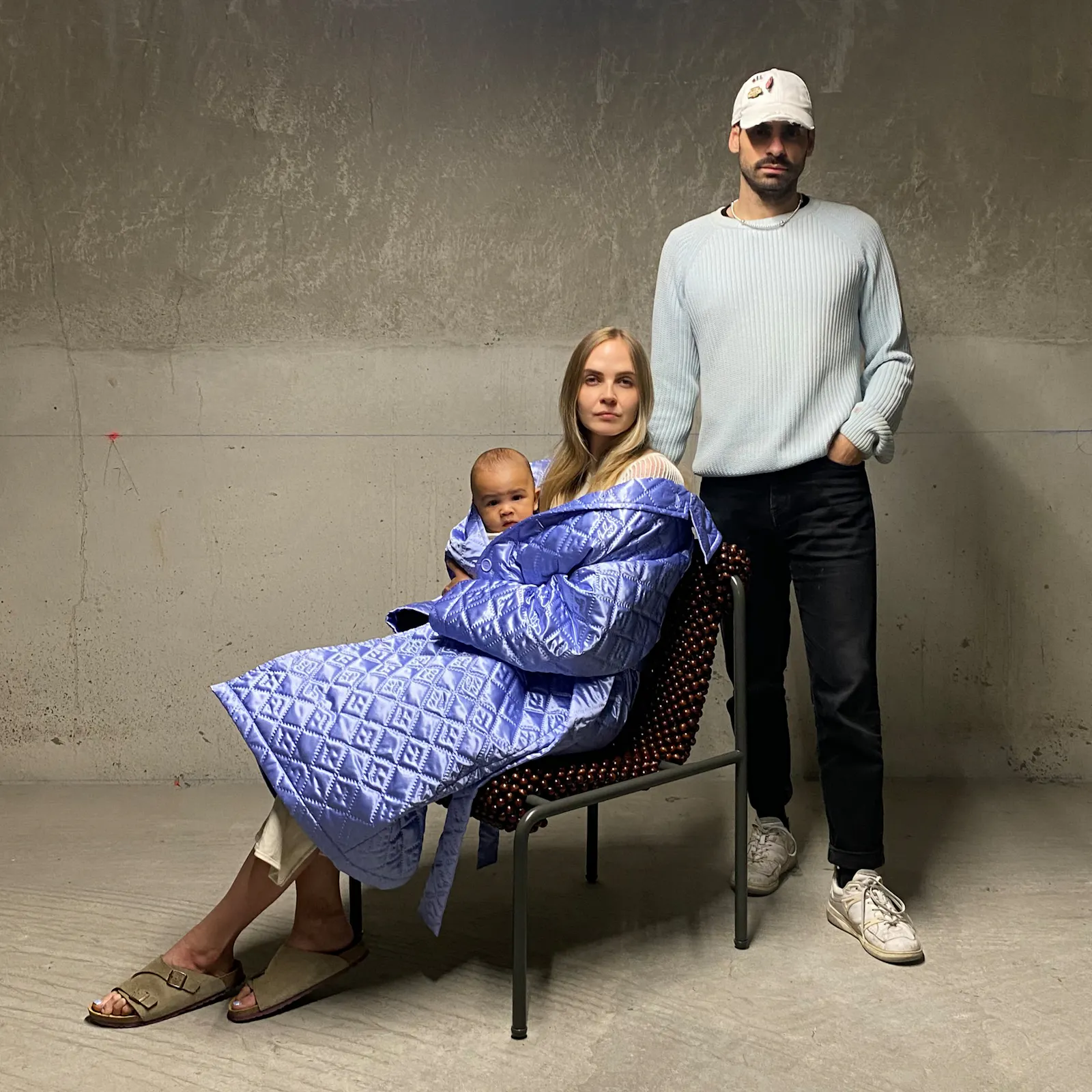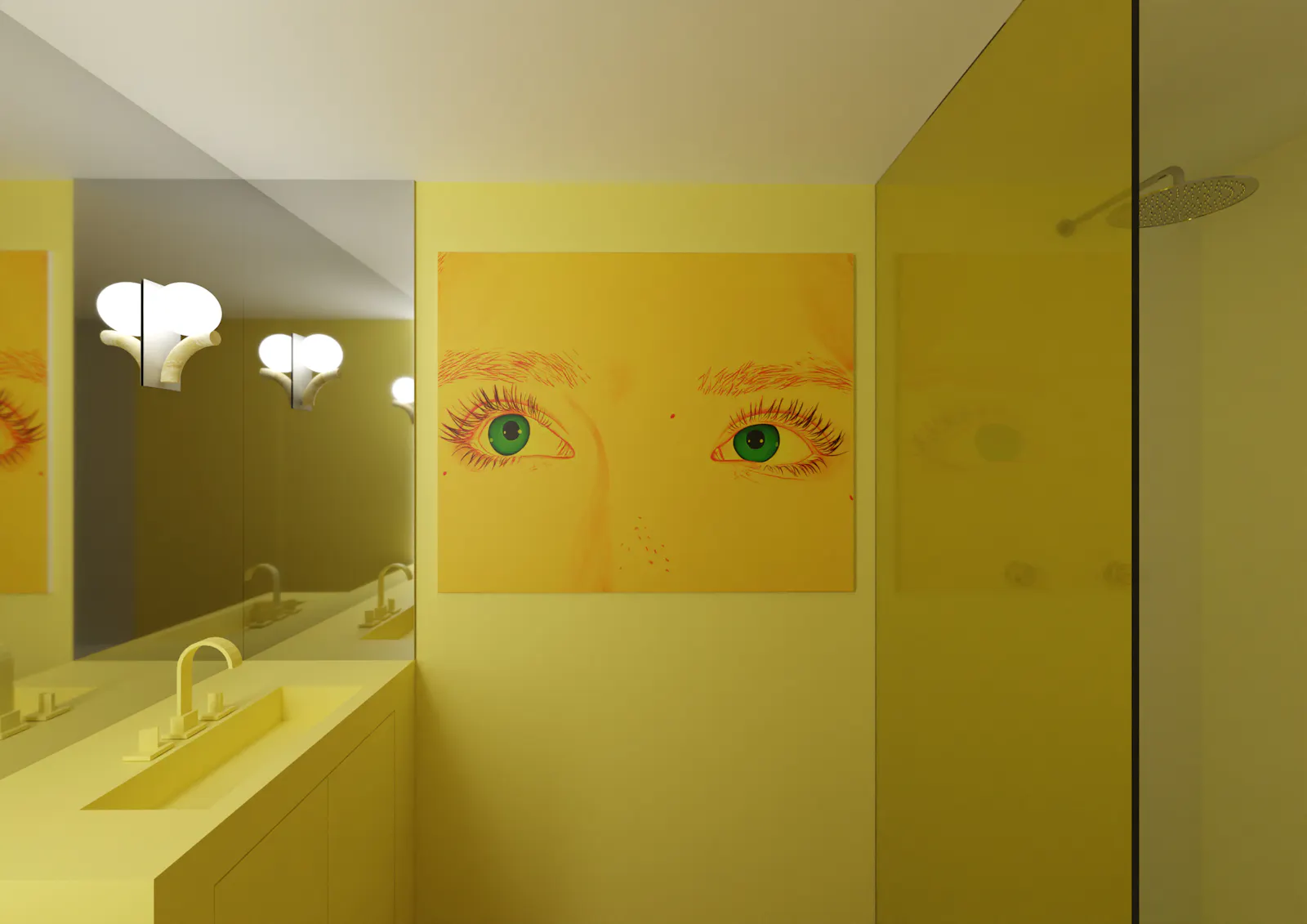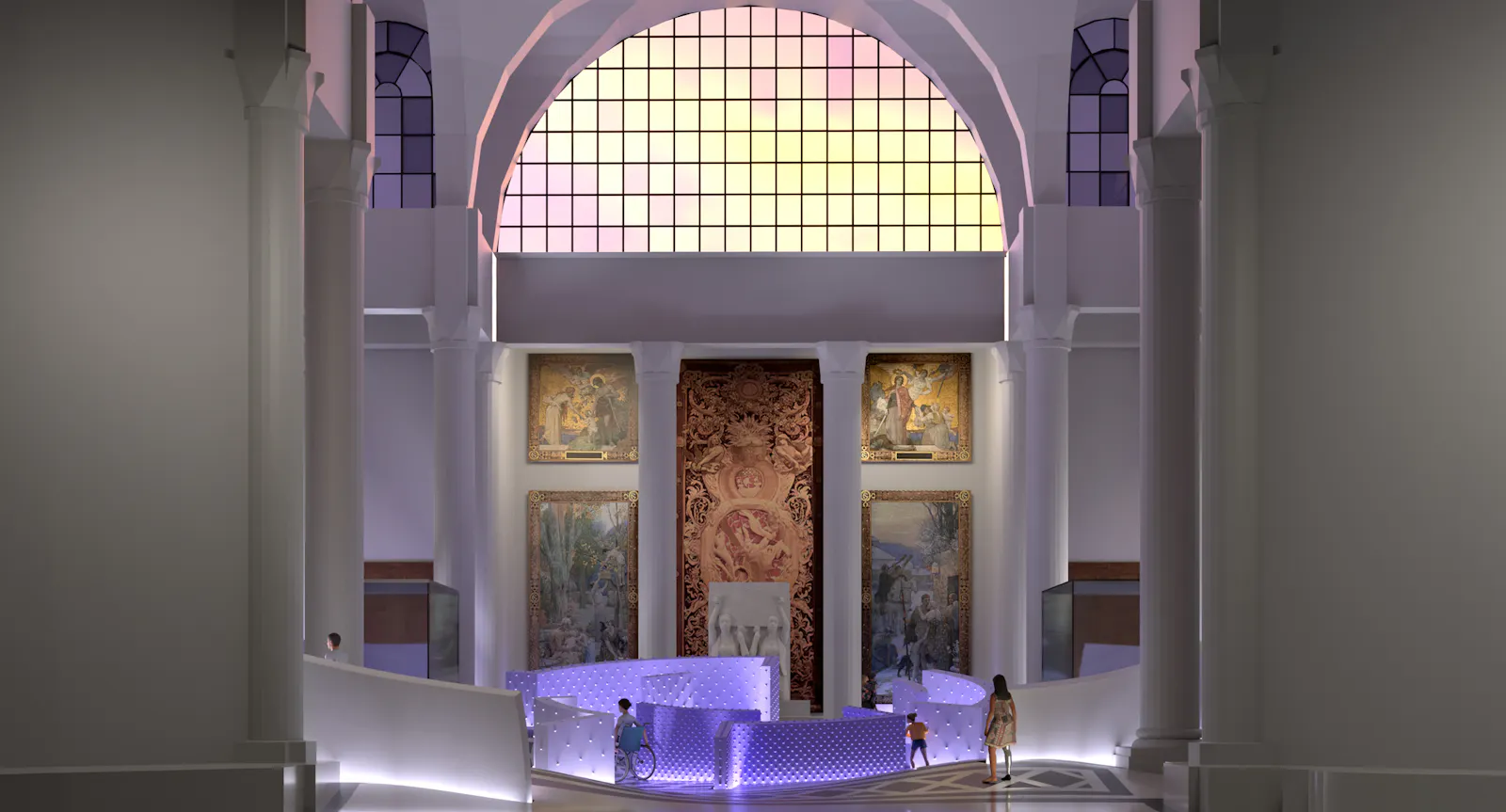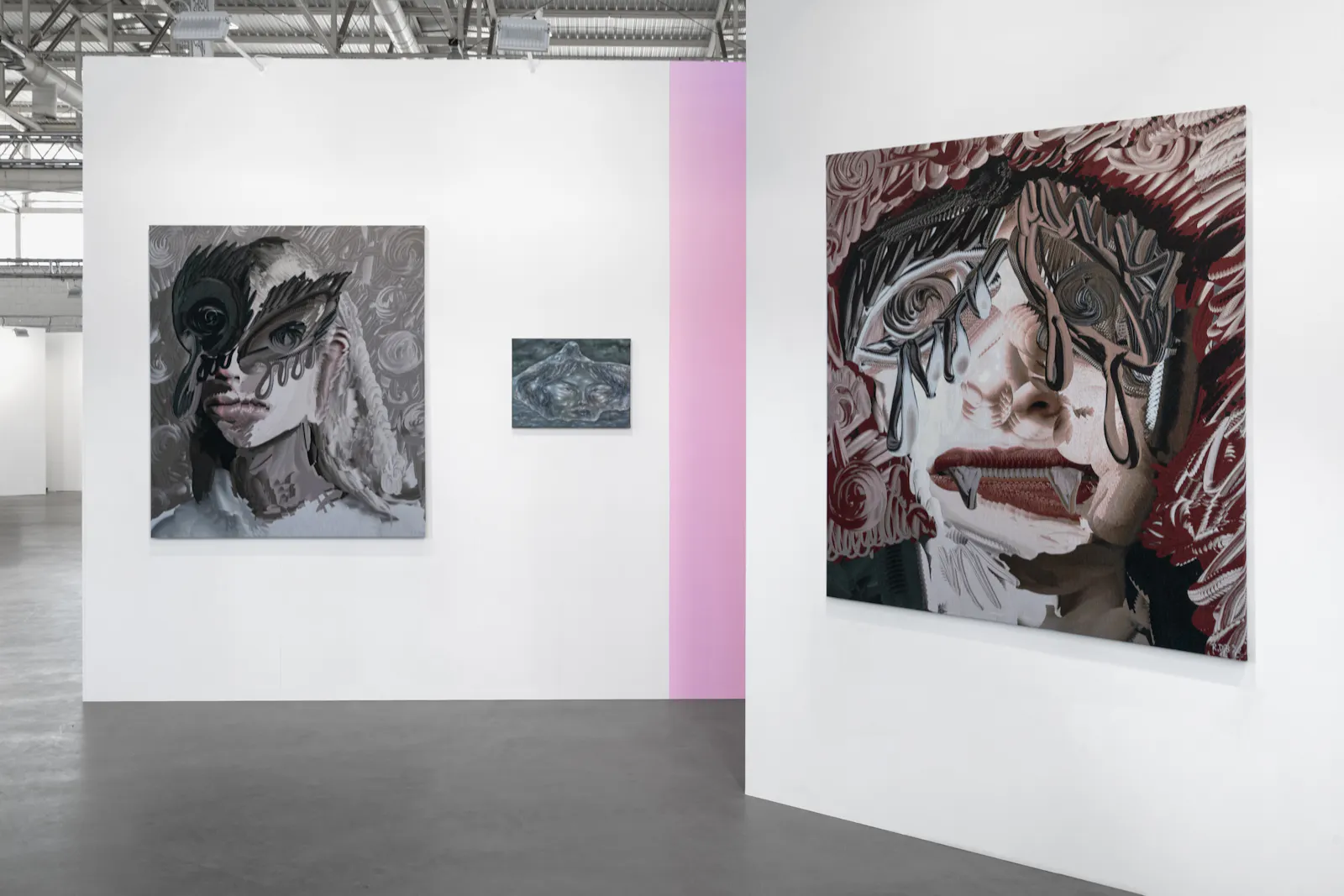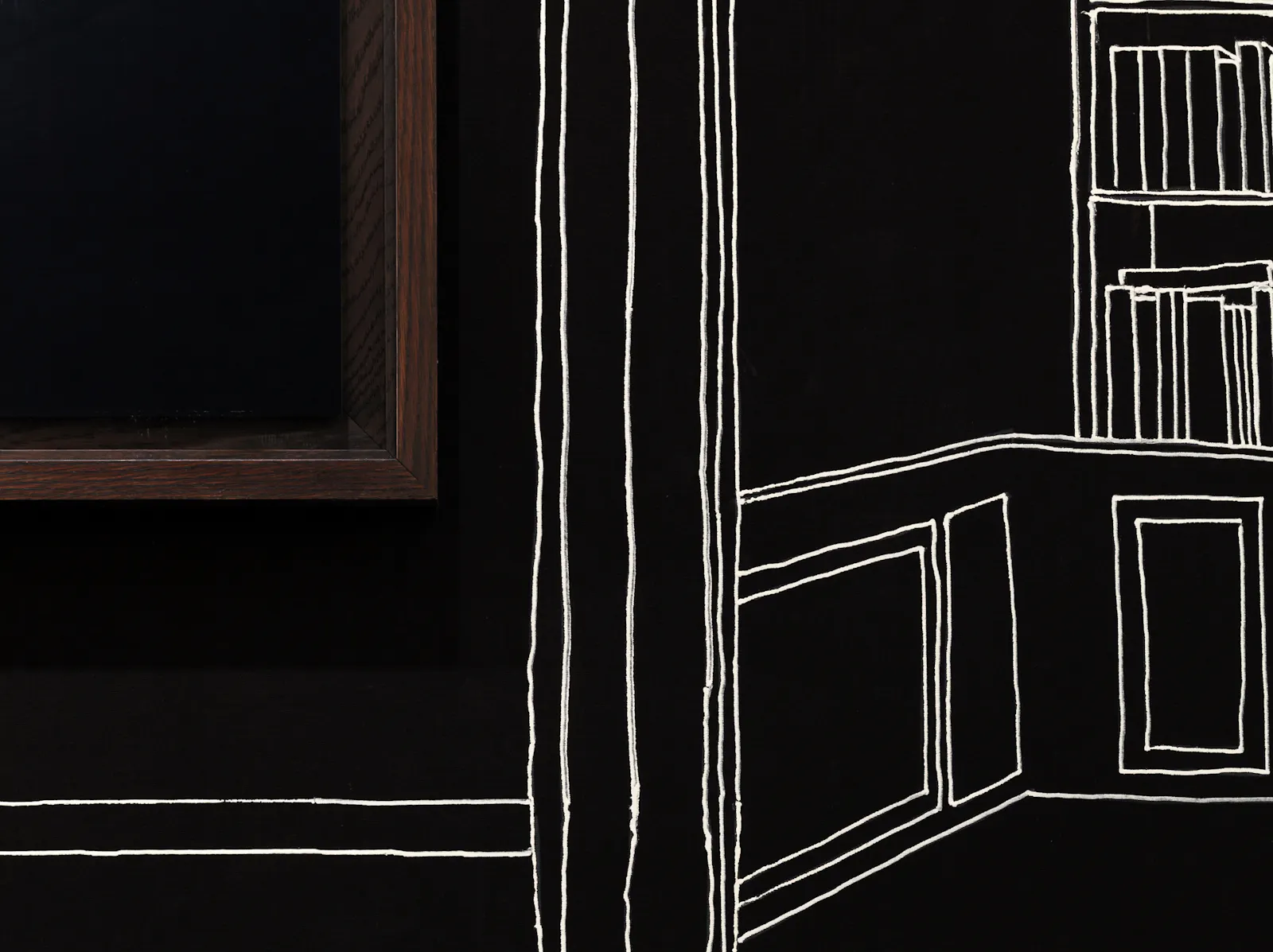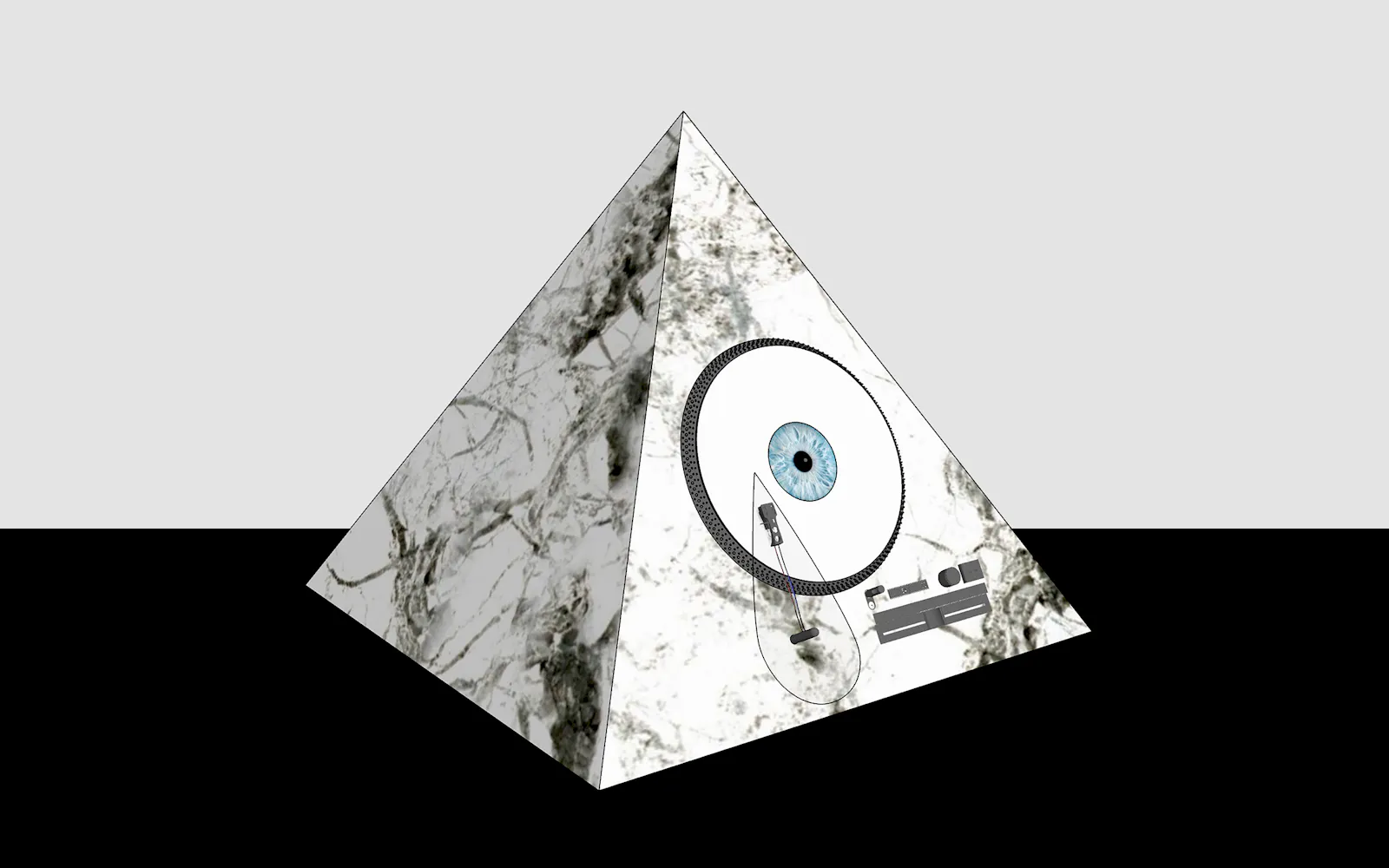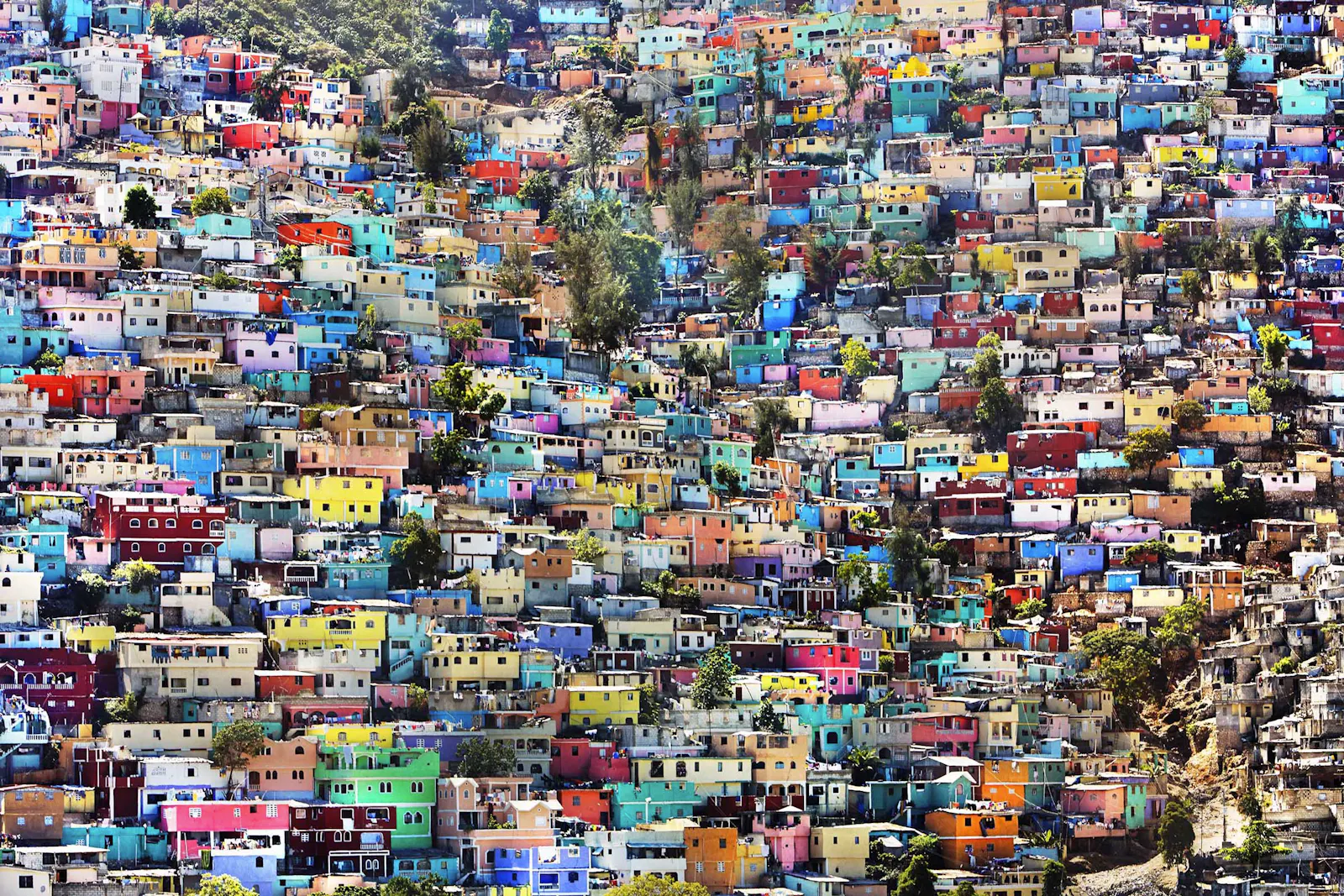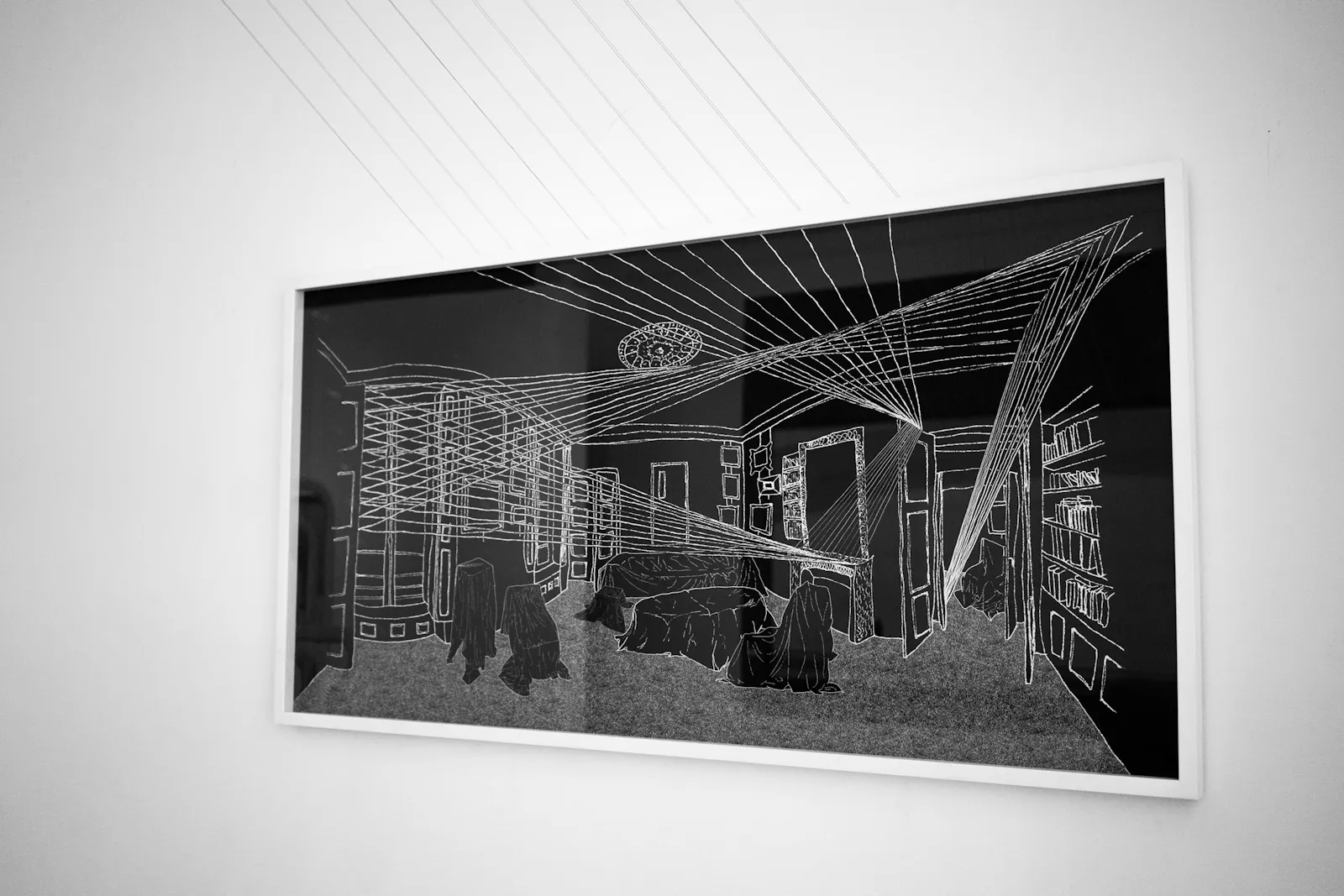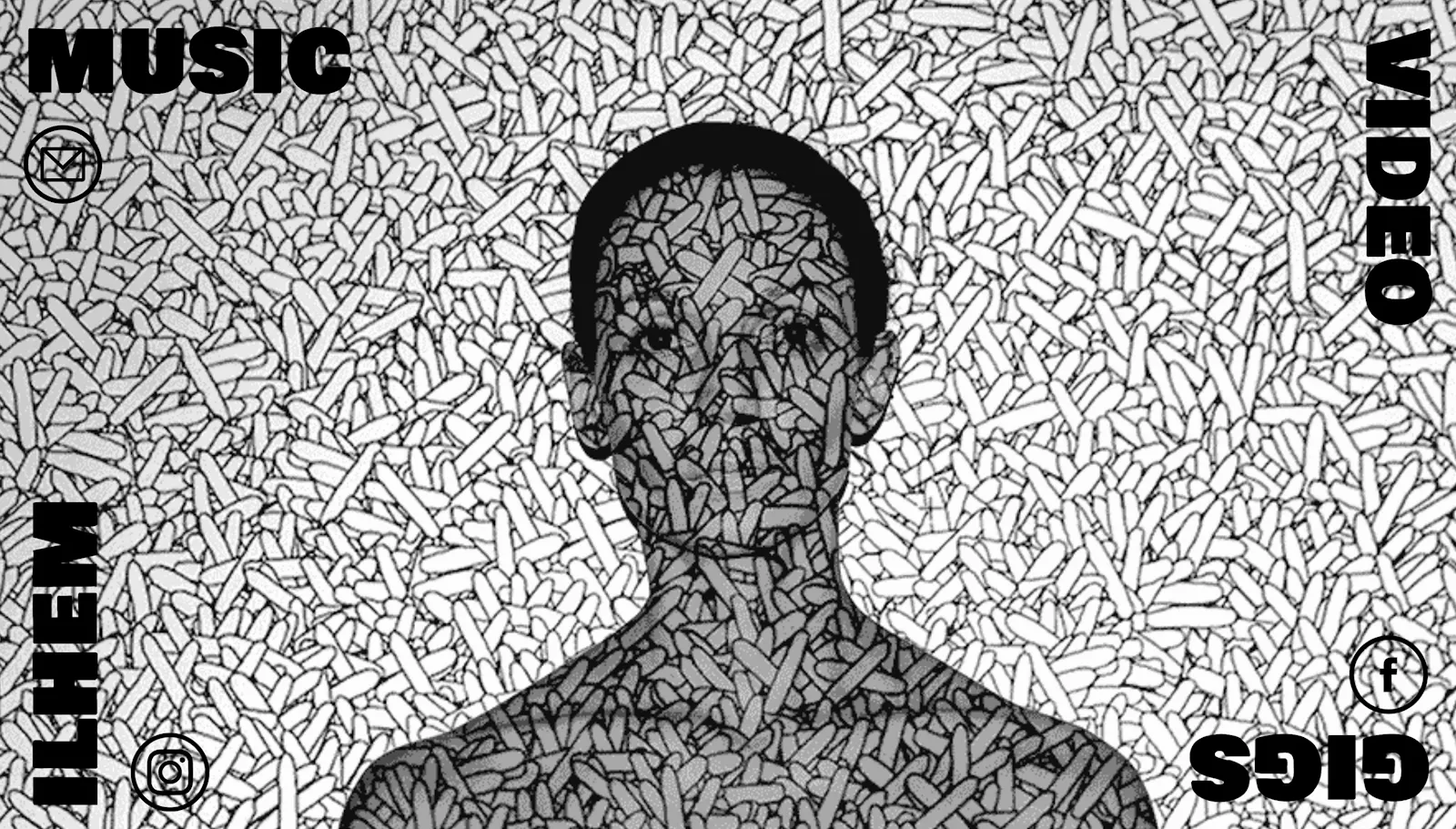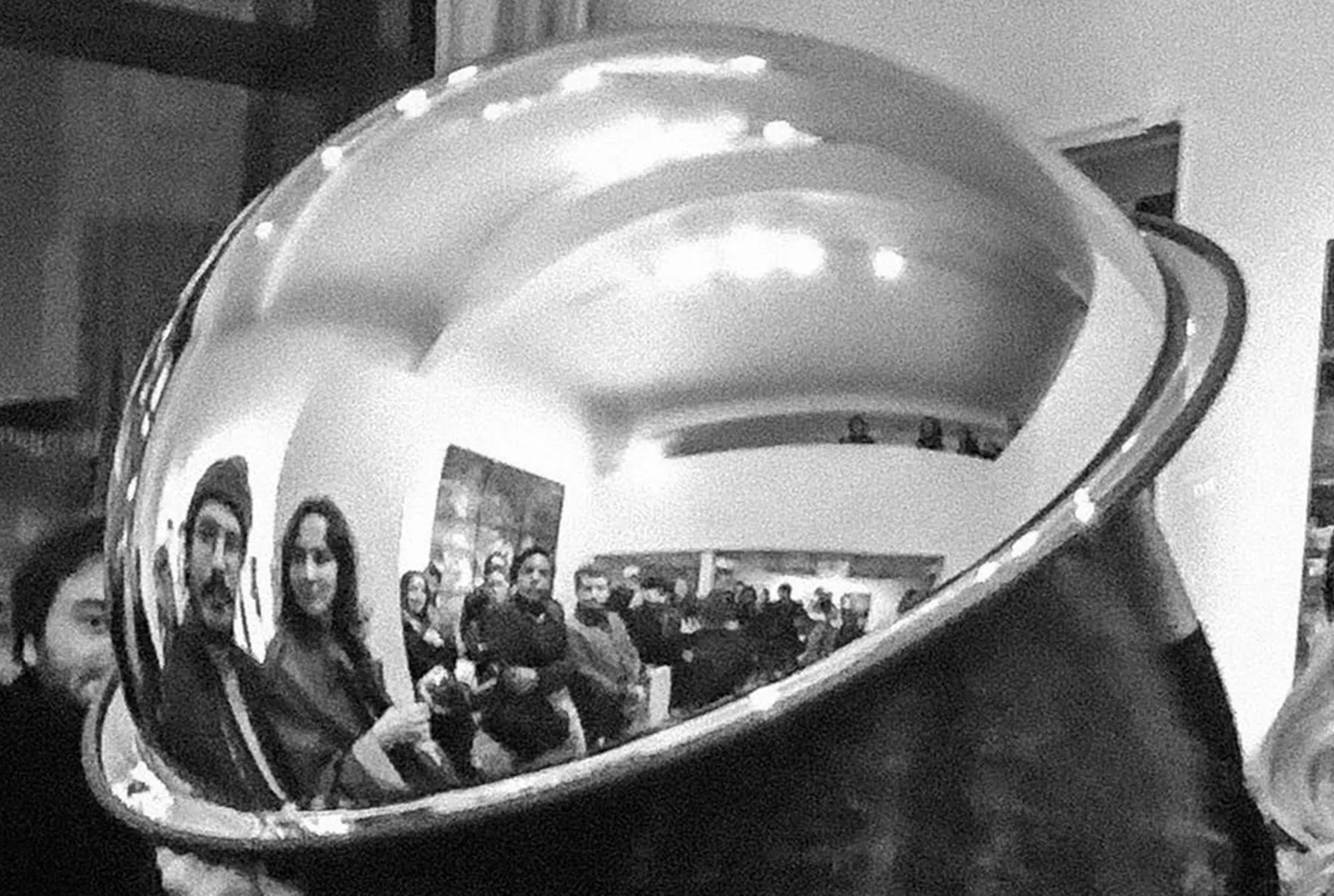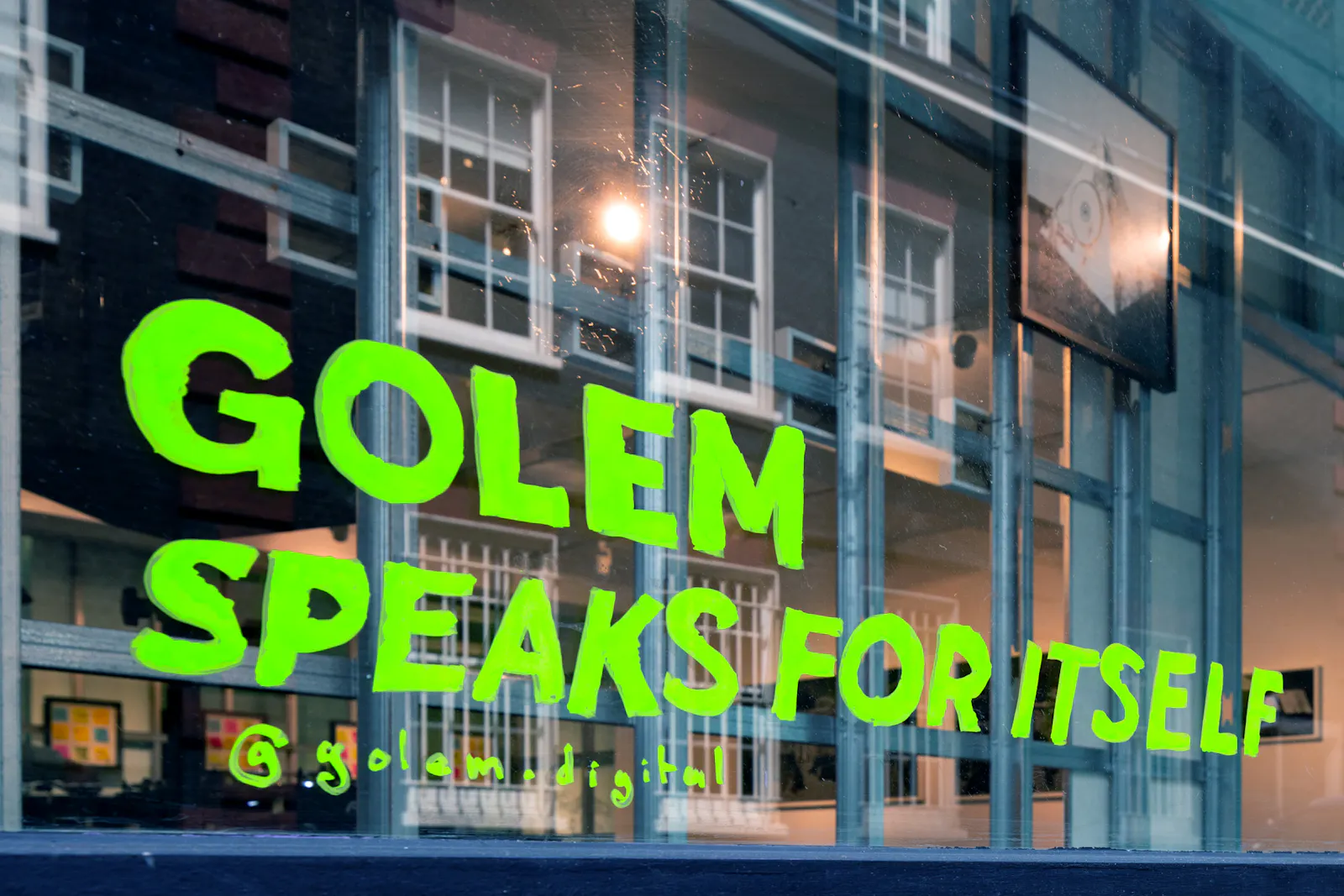Curatorial Architecture
For the first edition of the Bukhara Biennial in 2025, commissioned by Gayane Umerova and curated by Diana Campbell, Ariel André (GOLEM) was commissioned for the curatorial architecture, designing a spatial framework that opens heritage sites to the public, connects artworks in dialogue, enables safe and direct encounters with art, and supports artists in realizing large-scale works.
Curatorial Architecture is not a style but a new field at the intersection of exhibition design, public space, and artistic mediation developed through a half-decade-long collaboration with Curator Diana Campbell . It is a way of hosting relations between artworks, places, and publics with enough precision for heritage sites and enough softness for everyday use.
In Bukhara, that meant designing public spaces so the historical city acts as host rather than backdrop. We refined paths and designed resting points so visitors could move with ease, meet art up close, and feel welcome to stay. The aim was simple: immersion without risk, dialogue without hierarchy, and clear credit to the many hands involved.
Khoja Kalon Mosque ensemble
At the Khoja Kalon Mosque complex, we built a ramp to weave several commissions into one continuous path. Visitors ascend along a quiet, steady line strong enough to carry them safely, yet weak enough that its railings crack under the weight of Ruben Saakyan’s dunes, merging the public path with art.
Entering the premise, Delcy Morelos eases you in; then Antony Gormley draws you into a labyrinth of bodies shaped from the very earth beneath your feet. Saakyan, together with biologist Konstantin Lazarev, shelters a strip of living plants within his dunes, while above, Jazgul Madazimova’s wave of women’s scarves forms a floating spine guiding the ascent.
The ramp becomes a mediator. Instead of separating the public from the works, it folds them together. Circulation turns into a curatorial tool. Coexistence feels natural, not staged.
For Madazimova’s work, we designed a structure with minimal visual impact while ensuring the stability of the vulnerable centuries-old building it spans across.
Broken Hearts Bazaar
We were asked to design food stalls for the Biennial’s thresholds, as well as information points scattered across the city. Choosing a single form to serve both purposes, we began with a question: what would architecture look like if it were designed for those who cannot see it, whether because they are visually impaired or simply not trained to look at it?
The answer came through scent. Inspired by Uzbekistan’s spice heritage, we shaped conical kiosks that echo market mounds and rural roofs.
Guided by touch and smell, visitors encountered spaces welcoming both humans and non-humans alike: a grandmother drawn by the scent of her beloved mountain tea, a blind passerby recognizing spices by smell, bees resting on clover, and cats licking paprika walls at night when no one is there to tell them off. These structures became places of meeting, rest, and exchange, extending architecture beyond vision toward a shared sensibility.
Laila Gohar, Navat Uy
Together with Food Artist Laila and local artisan Ilkhom Shoyimkulov, we helped realize a house-pavilion crystallized in Navat (rock sugar), crystallized over a light armature we designed for the artist. It was playful and precise, grounded in Bukhara’s sweets tradition. While most discovered it with their eyes, children and wasps were happy to experience it with their tongs.
Caravanserai bench
In the Caravanserai site, following the enlightened request of curator Diana Campbell to avoid any type of railings we designed a single continuous bench that worked as seat, stage, and lookout. Performers used it for music. The public used it to rest and to view nearby works. Here we replaced a barrier by a fruitful place for all.
Hylozoic/Desires; Longing
For longing Hylozoic/Desires by Himali Singh Soin and David Soin Tappeser, we supported the artists in finding a way to deploy their work with a structure that had a minimal impact on the ikat - traditional handwoven silk fabric - being the center of the piece. Rather than building a freestanding or fixed structure, we used the site itself, gently wedging wooden logs between the canal’s stone surfaces to create support and covered it with clay gathered on site, allowing it to merge quietly with the context leaving room for the piece's flamboyant colors. The installation appeared to float, dance, rise and dive, held in place by its surroundings, echoing the delicacy and resilience of the fabric it carried.
Sara Ouhaddou, wall work
With Sara Ouhaddou, we supported a wall piece that draws on local metalwork used on everyday doors. The craft moved from domestic detail to civic scale, and the city read itself in the work.
